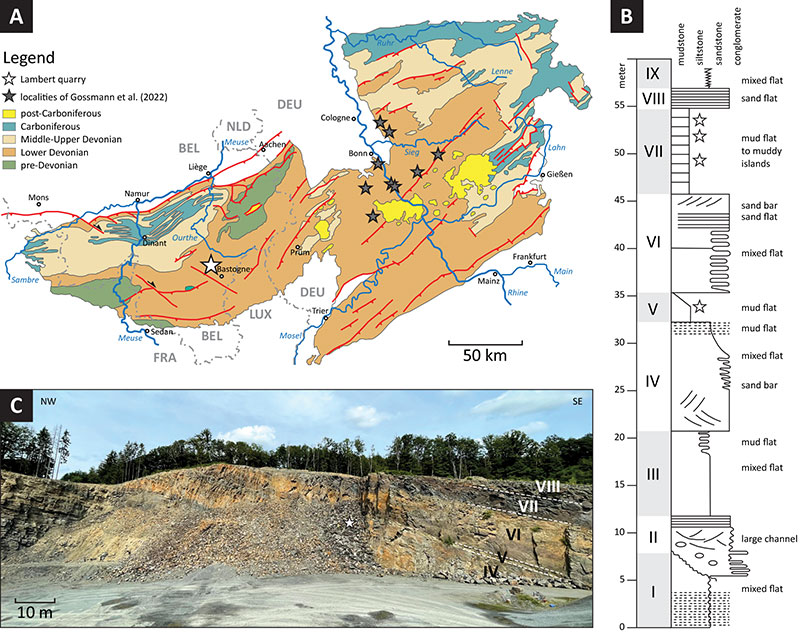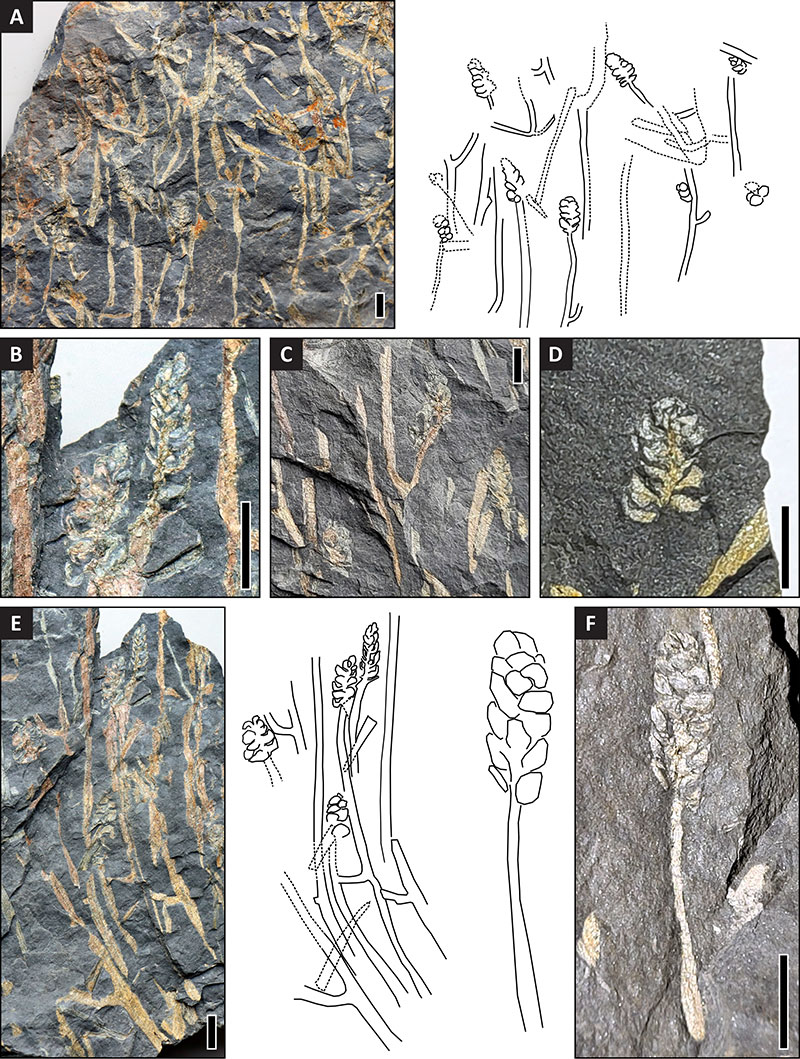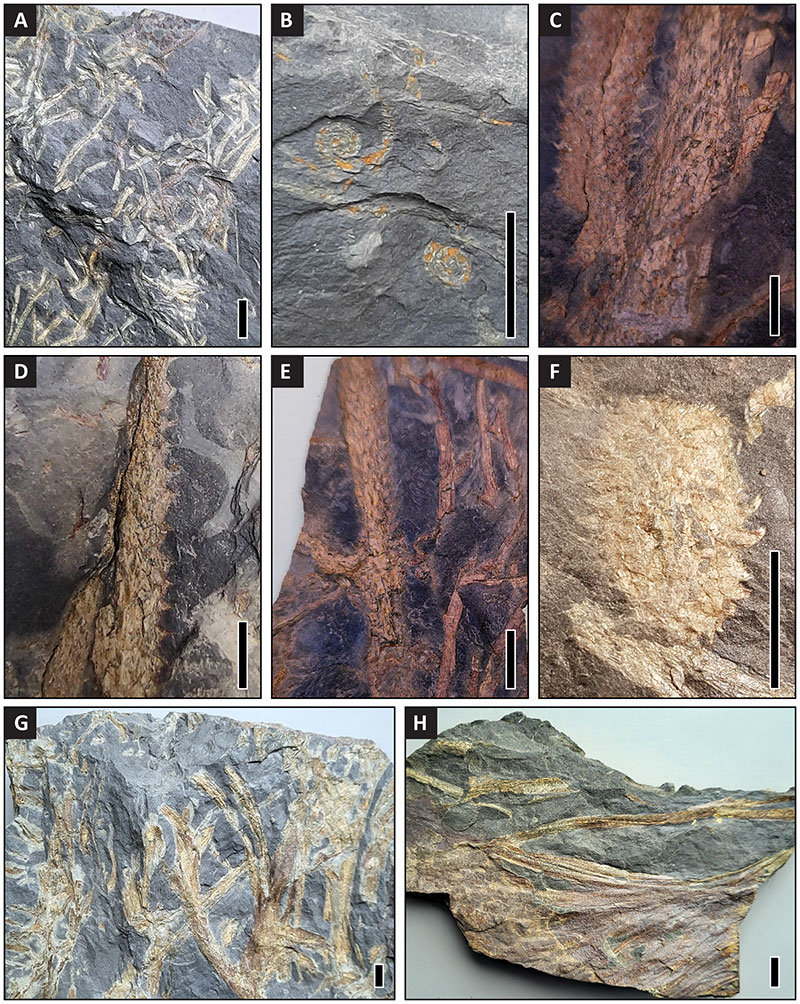FIGURE 1. Overview of the study area, with A) geological map of the Ardenno-Rhenohercynian Basin (modified after Dittmar et al., 1994; Pirson et al., 2008; Stets and Schäfer, 2009; Barros et al., 2021) showing the location of the Lambert quarry (white star) and occurrences of Zosterophyllum confertum in the Rhenish Slate Mountains (grey stars; based on Gossmann et al., 2022, table 1); B) stratigraphic column of Lambert quarry outcrop, with white stars indicating the levels bearing plant remains (modified after Goemaere and Dejonghe, 2005, figure 2); and C) photograph of the main working face of the quarry in August 2021, showing part of the stratigraphy and fossiliferous rock on the quarry tailings (indicated by star).

FIGURE 2. Photographs of Zosterophyllum confertum from the Lambert quarry, with interpretative sketches: A) dense mat of subparallel axes bearing numerous strobili, specimen IRSNB b 10028 (TKTW0808); B) subtriangular-shaped strobilus, specimen IRSNB b 10029 (TKTW0802); C) dichotomous branching with strobili, specimen IRSNB b 10030 (TKTW0803); D) detached oval-shaped strobilus, specimen IRSNB b 10031 (TKTW1013); E) subparallel axes bearing several strobili, specimen IRSNB b 10029 (TKTW0802); and F) oblong-shaped strobilus, specimen IRSNB b 10032 (TKTW0806). All scale bars are 1 cm.

FIGURE 3. Examples of other vascular plant fossils collected at the Lambert quarry: A) slender axes showing a quite prominent midrib, morphologically resembling “Taeniocrada”, biological affinity unknown, specimen IRSNB b 10033 (TKTW1015); B) slender axes with circinate tips, specimen IRSNB b 10034 (TKTW0805); C) drepanophycalean axes with indistinctly rhomboidal surface pattern, specimen IRSNB b 10035; D) drepanophycalean axis showing spine-like microphylls, specimen IRSNB b 10036; E) drepanophycalean axis showing anisotomous branching, specimen IRSNB b 10037; F) oval body with similar spine-like protrusions, specimen IRSNB b 10038 (TKTW0807); G) wide vegetative axes of unknown biological affinity, specimen IRSNB b 10039 (TKTW1018); and H) wide vegetative axes, specimen IRSNB b 10040 (TKTW1017). All scale bars are 1 cm.

FIGURE 4. Fauna collected in association with plant remains at the Lambert quarry: A) unidentified bivalve (white arrow) having a relatively smooth shell surface showing concentric growth lines, found in a mass of subparallel slender vegetative axes, specimen IRSNB a 14158 (TKTW1019); and B) spiriferids and bivalves, some articulated, found in association with poorly preserved vegetative axes, specimen IRSNB b 14159. All scale bars are 5 cm.


